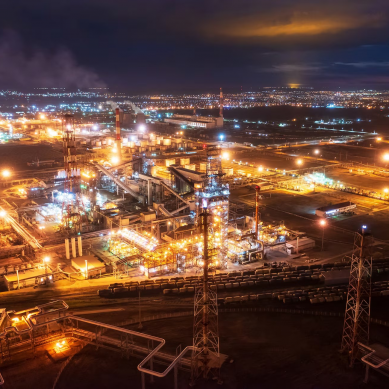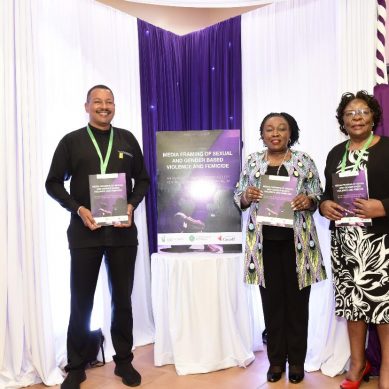
Unless the root causes of instability are addressed, conservation efforts could ultimately serve to inflame tensions.
Boko Haram has become shorthand for the insurgent group Jamatu Ahli Al-Sunna lil Da’wa Wal Jihad (JAS). However, the term also tends to conflate JAS with the separate – and rival – Islamic State in West Africa Province (ISWAP). Both groups are active in the Cameroon border region.
Northern Cameroon is facing a crisis that epitomises the interconnected challenges of our time: climate change, armed conflict and environmental degradation. This combined threat has forced hundreds of thousands of people to flee the semi-arid Far North Region for more fertile savannas further south. With little available land, many people have settled in the vast network of protected areas in the North Region – lands set aside by the state to conserve flora and fauna.
In response, a coalition of international NGOs is working with the Cameroonian government to scale up conservation efforts – but not always to the benefit of some local communities. This is happening in two ways: by bringing in the military to support conservation law enforcement; and through a “micro-zonating” exercise – to clearly define areas for human activities and biodiversity protection.
These measures have begun to curb biodiversity loss. In some cases, they have drawn local support for improving local security by deterring bandits and armed poachers from protected areas. However, heavy-handed methods are also creating conflicts between park authorities and displaced and migrant populations.
Cameroon’s Far North has long been on the frontline of climate change. The region has suffered recurrent droughts, most notably during the 1970s and 1980s. This has led to successive waves of southerly migration to more fertile regions. Perhaps the most striking symbol of the changing climate is the shrinking of Lake Chad, a large part of which overlaps with northern Cameroon. A vital water and fish source for millions, the lake shrunk by 90 per cent between 1960 and 1990. While the size of the lake now appears to be stable and even increasing again, climatic changes continue.
Temperatures are rising – one and a half times faster than the global average. This is driving more climate variability and extreme weather events. 2024 marked the most severe drought in the Far North since the 1990s.
Similarly, severe flooding struck the Lake Chad Basin in both 2022 and 2024, forcing millions to flee and submerging farmland. During the 2022 floods, 19 of the 23 provinces in the basin’s southern region were impacted, disrupting the lives of close to 1.5 million people.
But climate change is not the only reason people are moving. The northern regions of Cameroon have also long grappled with insecurity. This largely stems from the failure of the state to maintain law and order. Over several decades, this has led to a massive increase in armed banditry, kidnappings and highway robbery – both domestically driven and emanating from Cameroon’s restive neighbours. Sometimes, state agents are themselves involved in this shadowy economy.
The jihadist insurgent group Boko Haram, based in north-eastern Nigeria, is one of the more recent and severe sources of insecurity. It began carrying out cross-border attacks, lootings, kidnappings and bombings in the Far North from 2013 onward.
Coupled with climate change, the Boko Haram crisis has slowed a regional economy heavily dependent on agriculture, pastoralism and cross-border trade. The human toll is even more devastating: thousands killed, injured, or forced to flee. Around 120,000 Nigerian refugees have spilled into Cameroon, while a further 321,000 Cameroonians are internally displaced. This contributed to Cameroon recently topping the Norwegian Refugee Council’s Neglected Displacement Crises of 2024 index.
This mix of climate change and conflict is straining protected areas.
Located close to the Nigerian and Chadian borders, Waza National Park was once the most visited park in central Africa, attracting – at some points – more than 5,000 tourists a year. This thriving industry provided local residents with jobs in hotels, as guides, and in handicraft production.
However, in February 2013, seven French tourists vacationing nearby were kidnapped by gunmen some suspected to be affiliated with Boko Haram. Since then, tourism has come to a standstill, the local economy has crumbled, and the park is now on the brink of collapse. At the same time, climate change has turned nearby lands barren, pushing cattle herders into the park in search of pasture.
The environmental impact of displacements created by the insurgency has been severe. The arrival of refugees has also increased demand for charcoal – much of it sourced from Waza National Park – speeding up deforestation and biodiversity loss.
While claims that Boko Haram poached elephants for their ivory have proved to be exaggerated, Waza’s iconic population of more than 1,000 savannah elephants has all but disappeared. Some migrated south to Kalfou Forest Reserve or north to Kalamaloué National Park. Others became trapped after migrating to Nigeria: A trench dug by Cameroon’s military to keep Boko Haram out also cut off their return route.
Cameroon’s North Region has largely avoided the worst of Boko Haram’s violence and climate-induced droughts. Yet the crisis has still placed significant strain on both the region’s people and its environment.
Waves of refugees, economic migrants and internally displaced persons from the Far North Region have triggered what locals refer to as a demographic explosion around protected areas. Covering over 40 per cent of the territory, spanning a huge 3.35 million hectares, these areas include three national parks: Bouba Ndjida, Benoué and Faro.
There are also 28 hunting zones or Zones d’Intérêt Cynégétique (ZICs), containing critical ecological corridors that link the three national parks. Taken as a whole, the landscape forms the last major wildlife refuge remaining in north-central Africa.
The migrants and displaced persons have been forced to settle in the ZICs and ecological corridors – these being some of the only cultivable lands still available. But their farms are now blocking critical wildlife migration routes.
The North Region has also experienced insecurity of its own, with dramatic impacts for both conservation and people.
In 2012, Janjaweed militias from Sudan slaughtered more than 200 elephants in Bouba Ndjida National Park. In 2018, six soldiers from Cameroon’s elite Rapid Intervention Battalion (BIR) and two local trackers were killed inside the park by Sudanese poachers.
Compounding these threats, the protected areas in Cameroon’s north have become hideouts for armed criminal gangs: Known as Zaraguina, they hijack vehicles and kidnap civilians for ransom.
The Cameroonian government has responded to these threats by militarising its conservation efforts: “Operation Peace at Bouba Ndjida”, launched at the end of 2012, marked the beginning of this strategy.
- A Tell Media report / Republished with the permission of The New Humanitarian Republic







